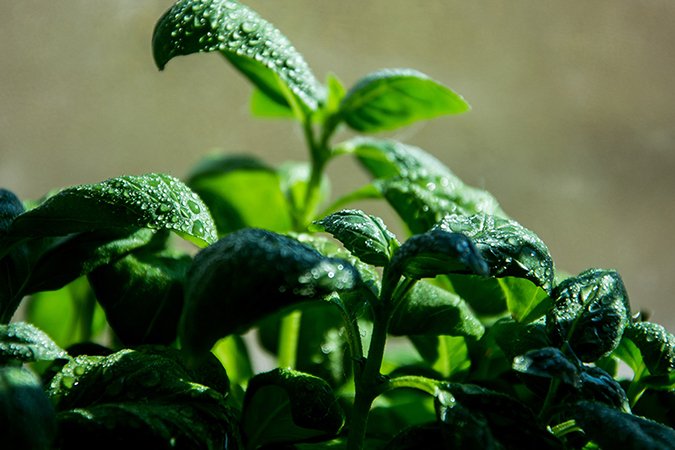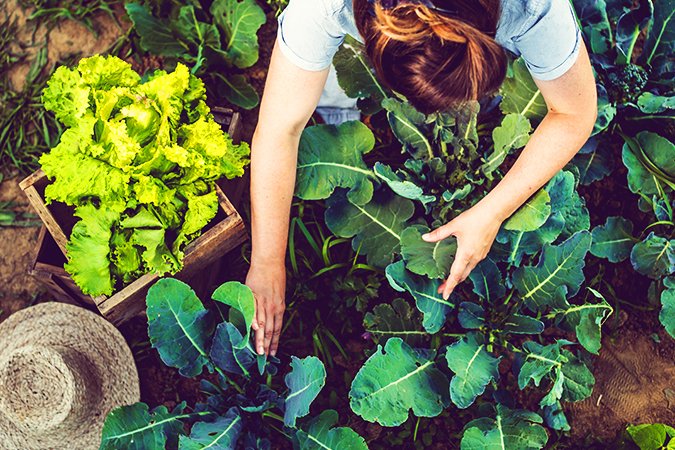Why Is The pH Level For Vegetables Important?
Getting the soil pH level for vegetables right is a crucial but often overlooked aspect of gardening. Read on to find out the ideal pH range for vegetables.
In this article you will learn:
- Why pH level for vegetables is important.
- What is the best pH level for vegetables?
- How to test and adjust your soil pH level for vegetables.
Why Is The pH Level For Vegetables Important?
The pH of the soil is a measure of its acidity or alkalinity on a scale of 0 to 14. The closer to 0 the pH is, the more acidic the soil, and vice versa for alkalinity, while 7 represents a neutral pH.
The soil pH level for vegetables is important since it affects the availability of most nutrients essential to healthy plant growth. The pH level also impacts the beneficial activities of microbes in the soil.
If soil pH is too acidic, then plants have difficulty absorbing nutrients, especially phosphorus. If soil pH is too alkaline, then it becomes deficient in nutrients such as copper, iron, manganese, and zinc.
In either case, vegetables will be unable to get the nutrients they need to grow, so they will appear stunted with yellowed leaves and will be unlikely to flower.
What Is The Best pH Level For Vegetables?
The best soil pH level for vegetables to grow healthy and abundant should be slightly acidic, ranging between 6 and 7. A pH of 6.5 is ideal for many vegetables.
However, plenty of vegetables can tolerate a pH that is a little more acidic or alkaline than this, between 5.5 and 7.5, but if your soil pH is above or below these levels then some form of soil treatment will be necessary to establish a conducive growing environment.
Here's a quick guide to the ideal pH level for vegetables that are commonly grown:
|
Vegetable |
Ideal pH Range |
|
Artichoke |
6.5 – 7.5 |
|
Asparagus |
6.0 – 8.0 |
|
Beans |
6.0 – 7.5 |
|
Broccoli |
6.0 – 7.0 |
|
Cabbage |
6.0 – 7.5 |
|
Carrot |
5.5 – 7.0 |
|
Cauliflower |
5.5 – 7.5 |
|
Celery |
6.0 – 7.0 |
|
Cucumber |
5.5 – 7.5 |
|
Garlic |
5.5 – 7.5 |
|
Kale |
6.0 – 7.5 |
|
Lettuce |
6.0 – 7.0 |
|
Onion |
6.0 – 7.0 |
|
Parsnip |
5.5 – 7.5 |
|
Pea |
6.0 – 7.5 |
|
Potato |
4.5 – 6.0 |
|
Pumpkin |
5.5 – 7.5 |
|
Spinach |
6.0 – 7.5 |
|
Tomato |
5.5 – 7.5 |
|
Turnip |
5.5 – 7.0 |
How To Test Whether Your Soil Has The Optimal pH Level For Vegetables
Testing soil pH level for vegetables is fairly straightforward and inexpensive to do by yourself.
There are two main options: using a paper litmus test or a digi pH pen.
The litmus approach uses a strip of paper soaked in a special dye. Mix a small sample of soil in water then wet the litmus paper with it. It will change colour corresponding to an accompanying chart that indicates the pH level.
With a digi pH pen, you simply stick the probe end into the soil and wait for a reading on the screen. It’s therefore an easier and more accurate method.
Whichever approach you choose, be sure to use several samples from across your garden and make sure those samples are taken below the immediate topsoil.
Can I Adjust The Soil pH Level For Vegetables?
If your soil is either too acidic or too alkaline, there are several simple ways you can adjust it although they can take at least several months to achieve an appropriate pH level for vegetables.
For very acidic soils, you should consider using organic products specially-formulated to raise pH, such as BAC’s pH+ which contains a strong concentration of caustic potash. If, however, the soil is only slightly acidic you could use calcium-based matter such as lime, wood or dolomite.
For very alkaline soils, BAC’s pH-, which contains phosphoric acid, is a very effective way to lower pH. If you only need to lower the pH by a small amount, then you could use powdered sulphur, pine needles, or even wood mulch. Organic matter is acidic when broken down, but be aware that lowering pH generally takes more time than raising it.
pH Level For Vegetables: Key Takeaways
- Soil pH level is important as it affects the availability of essential nutrients for vegetables.
- The best pH level for vegetables is between 6 and 7, although most vegetables can tolerate slightly more or less than this.
- When the soil is above pH 7.5 or below 5.5, then the soil pH level needs to be adjusted for most vegetables to grow healthily.
- It is easy to test and adjust soil pH levels, but it can take several months for any changes to take effect.




